详解C++标准库<sstream>中的类stringstream
目录
- 一、字符串格式化函数sprintf()存在的问题
- 二、详细介绍C++标准库中的类stringstream
一、字符串格式化函数sprintf()存在的问题
在实际工作中,我们常常需要将数值型数据转化为字符串型数据。
此时,您当然可以选择C标准库<stdio.h>中的字符串格式化函数sprintf()来解决这个问题。
在我的博文https://www.hhai.cc/thread-99-1-1.html 的第二个示例代码中便使用了sprintf()将数值转化成字符。
但是函数sprintf()存在一些问题:
①假设你想使用sprintf()函数将一个变量从int类型转换到字符串类型。为了正确地完成这个任务,你必须确保证目标缓冲区有足够大空间以容纳转换完的字符串。假设你要得到的字符串字节数范围为1~100,那你必须保证你为sprintf()函数定义的目标缓冲区有100字节的大小。比如下面这个例子。
- int x;
- int y;
- char temp[16];
- sprintf(temp, "(%d,%d)", x, y);
上面的代码是没有问题的,但是下面的代码就有问题了:
- int x;
- int y;
- char temp[16];
- sprintf(temp, "My current coordinate value is (%d,%d)", x, y);
为什么有问题,因为字符串"My current coordinate value is (%d,%d)"是33个字节,超过了字符数组temp的长度16,所以程序运行时就会报错了。
从这个例子我们就会想,如果在转换时能根据任务需要自动分配存储空间那不是更好吗?
这是函数sprintf()存在的第一个问题。
②使用sprintf()函数时必须使用正确的格式化符。如果使用了不正确的格式化符,会导致非预知的后果,比如下面这个例子。
- int n=10000;
- chars[10];
- sprintf(s,”%d”,n);// s中的内容为“10000”
上面这个代码是没有问题的,但是对上面代码的一个微小的改变就会使程序崩溃,比如下面这样:
- int n=10000;
- char s[10];
- sprintf(s,”%f”,n);// 错误的格式化符
从这个例子我们就会想,sprintf()函数在转换时要是能自动推导出正确的类型,那不是更好吗?
这是函数sprintf()存在的第二个问题。
二、详细介绍C++标准库中的类stringstream
C++标准库中的提供了比ANSI C的<stdio.h>更高级的一些功能,即单纯性、类型安全和可扩展性。
库定义了三种类:istringstream、ostringstream和stringstream,分别用来进行流的输入、输出和输入输出操作。
我们常用的是类stringstream,毕竟每个转换都要涉及到输入和输出操作,所以我的这篇博文重点介绍类stringstream的使用。
类stringstream很好地解决了函数sprintf()存在的两个问题。
类stringstream的使用其实很简单,一个简单的示例代码如下:
- //该代码实现整型数据转化为字符串
- #include <sstream>
- #include <iostream>
- using namespace std;
- int main()
- {
- int n = 12345;
- stringstream ss;
- string str;
- ss << n;
- ss >> str;
- cout <<str<< endl<< endl;
- }
上面的代码运行结果如下:
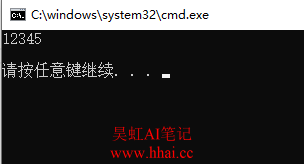
注意:经过上面代码的处理,输出的12345并不是整型数值12345,而是字符串12345。
类stringstream之所以能解决上面函数sprintf()遇到的两个问题:
一是因为当流传入和传出stringstream对象时(比如上面代码中的“ss << n”和“ss >> str”),它能自动识别推导格式,而不用用户再去手动设置。
二是因为使用string对象来代替字符数组(对应上面的代码“string str;”),它能自动去分配相应的存储空间,这样可以避免流输出时缓冲区溢出的危险(对应上面的代码 “ss >> str”)。
正是因为类stringstream能自动识别推导格式,所以使得它不仅能实现数值类型转化为字符串,也能实现其它类型间的相互转换。
上面的代码实现了整型转换为字符串,我们还可以利用它实现字符串转换为浮点型,比如下面的代码。
- //该代码实现字符串型数据转化为浮点型数据
- #include <sstream>
- #include <iostream>
- using namespace std;
- int main()
- {
- string my_string="10000";
- float f_1=0;
- stringstream ss;
- string str;
- ss << my_string;
- ss >> f_1;
- cout <<f_1<< endl<< endl;
- }
代码运行结果如下:
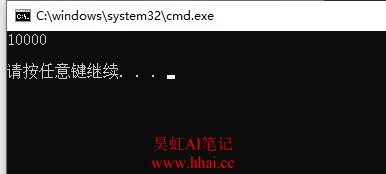
当然,整型转浮点型也是可以的,比如下面的代码:
- //该代码实现整型数据转化为浮点型数据
- #include <sstream>
- #include <iostream>
- using namespace std;
- int main()
- {
- int n = 1000;
- float f_1=0;
- stringstream ss;
- string str;
- ss << n;
- ss >> f_1;
- cout <<f_1<< endl<< endl;
- }
运行结果如下:
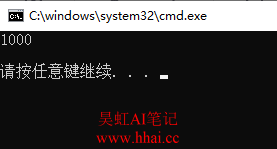
要注意的是:
stringstream对象的构造和析构函数是比较耗费CPU时间的,所以我们如果要多次进行转换,尽量重复使用同一个stringstream对象。但是在多次转换中使用同一个stringstream对象,要记住再每次转换前要使用clear()方法,否则得不到正确的正果。
比如下面的例子:
[C++] 纯文本查看 复制代码 #include <sstream>
#include <iostream>
using namespace std;
int main()
{
int n = 1000;
float f_1=0;
stringstream ss;
string str;
ss << n;
ss >> f_1;
cout <<f_1<< endl<< endl;
//再次使用对象ss进行转换
string my_string="99999";
float f_2=0;
ss << my_string;
ss >> f_2;
cout <<f_2<< endl<< endl;
}
上面代码的运行结果如下:
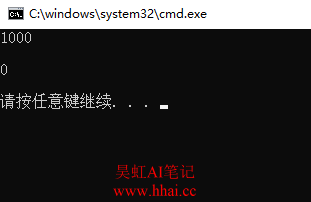
按理,f_2中的值应该是“99999”才对,但从上面的运行结果中我们看到f_2中的值为0,这就是错误的结果。解决方法是在第二次使用stringstream对象前先用方法clear()。下面的代码便能得到正确的结果:
[C++] 纯文本查看 复制代码 #include <sstream>
#include <iostream>
using namespace std;
int main()
{
int n = 1000;
float f_1=0;
stringstream ss;
string str;
ss << n;
ss >> f_1;
cout <<f_1<< endl<< endl;
//再次使用对象ss进行转换
ss.clear(); //再次转换前先clear才能得到正确的结果
string my_string="99999";
float f_2=0;
ss << my_string;
ss >> f_2;
cout <<f_2<< endl<< endl;
}
上面的代码的运行结果如下:
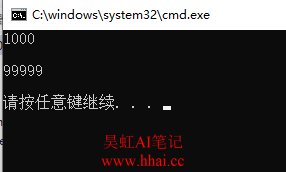
从上面的截图中可以看出,经过clear()操作,得到了我们想要的结果。
接下来,我们可利用类stringstream实现OpenCV对图片的批量读取,详情见链接:
https://www.hhai.cc/thread-101-1-1.html
|  |Archiver|昊虹AI笔记网
( 蜀ICP备2024076726 )
|Archiver|昊虹AI笔记网
( 蜀ICP备2024076726 )